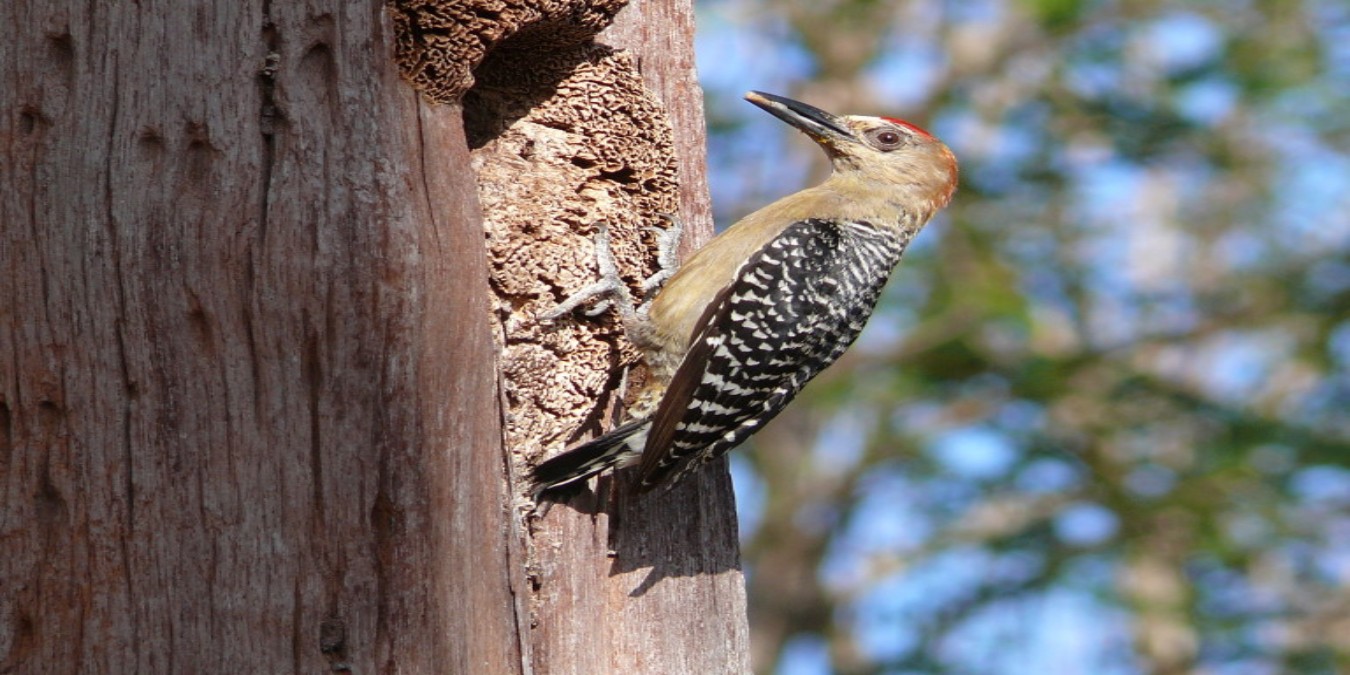Bright, inquisitive, and endlessly busy, the Red-Crowned Woodpecker (Melanerpes rubricapillus) is among Tobago’s most familiar avian residents, a spirited craftsman of the island’s trees and gardens. While common across parts of Central and northern South America, its presence on Tobago and notable absence from Trinidad give this species a distinct place in the island’s ecological story.
Measuring approximately 17 centimetres (7 inches), this compact woodpecker features a vibrant splash of scarlet on its crown and nape, creating a bold signature against the soft barring of black and white across its back. The female, more reserved in palette, wears her red lightly, her tones softened to cream and gold. Together, they move through Tobago’s open woodlands, plantations, and villages, their bright calls and rhythmic drumming marking both territory and life’s simple persistence.
Unlike many forest birds, the Red-Crowned Woodpecker has found comfort in proximity to people. It thrives among coconut palms, garden fruit trees, and coastal groves, where it feeds on insects, papaya, berries, and nectar. At dawn, its tapping may echo from a fence post or a power pole a familiar percussion in Tobago’s everyday symphony.
A year-round resident, it hollows its nest into decaying trunks, crafting a safe retreat for its young with remarkable precision. Here, in the quiet work of a small bird, lies a portrait of resilience and adaptation.
Lively yet unassuming, the Red-Crowned Woodpecker stands as a reminder that Tobago’s beauty is not confined to its reefs or rainforests alone; it beats, steady and cheerful, in the heartwood of its living trees.


Comments